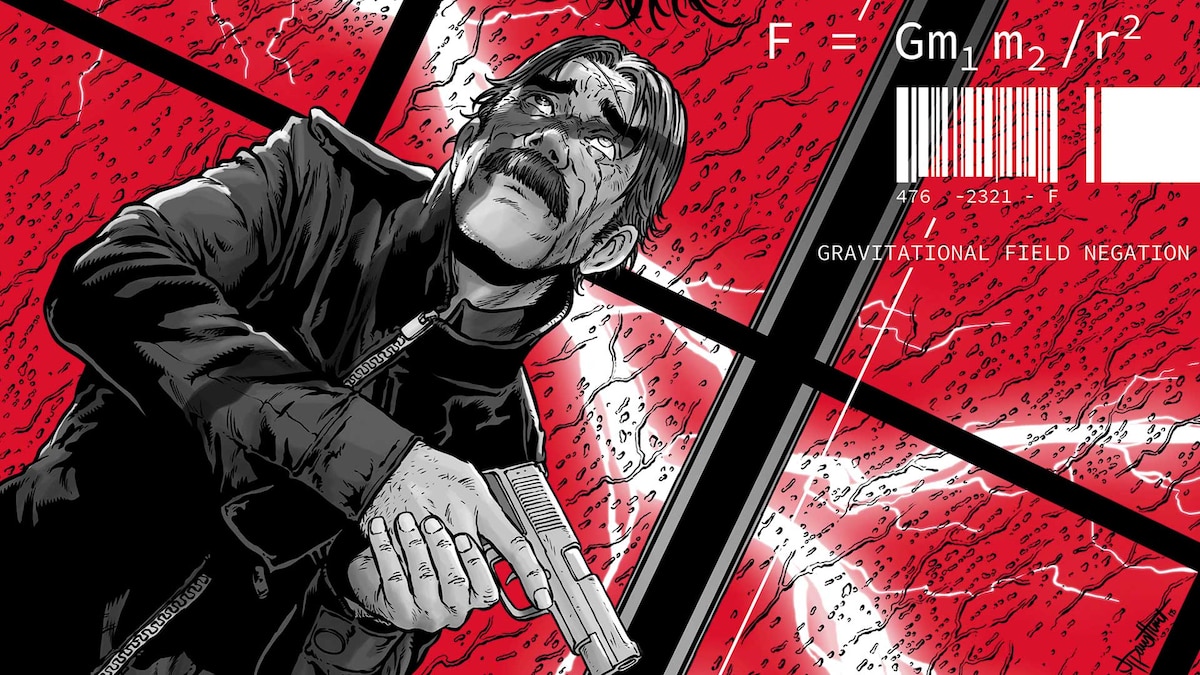I’ll admit, I tend to devote these columns almost exclusively to Warren Ellis’s story. The reasons for that should be pretty obvious to anyone who’s reading THE WILD STORM. There’s just so much to it! Combine that with Ellis’s skill at teasing out just enough new information with each issue to make you curse the thirty days you have to wait until the next one, and…well, you wind up with nearly a dozen columns picking apart twists, turns, themes and motivations.
It would be easy to do that with this installment as well, as I have some real thoughts on Angela Spica’s recent actions and we still haven’t properly discussed what John Lynch has been doing. But both of those will have to wait because Jon Davis-Hunt’s art is absolutely phenomenal in this issue, and we need to talk about it.
If you read these columns, it’s a pretty fair bet that you’re a comic fan, so I don’t need to lecture you on the importance of art to the story. Yet, there’s a difference between art that supports a good story, and art that tells a good story. Just about all artists working professionally in comics can do the former. The latter can be a bit rarer, and what makes Davis-Hunt’s art so continually remarkable is that he’s not just being asked to help tell a story—he’s being asked to tell a complex story. A challenging story. A flat-out weird story at times.
Do you remember the first time we saw Jacob Marlowe’s wild C.A.T. in action as they tried to apprehend Angela? What about Shen Li-Min’s trippy journey with a “class” of students through the pink-hued Bleed? John Colt’s showdown in feudal Japan? Or how about Henry Bendix’s ‘50s-tinged recounting of Skywatch’s attack on IO’s launch facilities?
All of those took place in the series more than half a year ago. Heck, the first one I mentioned happened all the way back in issue #3. While they’re exciting and interesting, if you can recall those scenes as clearly as I can, that’s due to Davis-Hunt. All of them are extended sequences where the art is asked to stand on its own. That’s a technique Ellis has been using in this series, and it shows great trust in his collaborator. Of course, it’s not hard to see why.
For example, THE WILD STORM #16 starts with a visual representation of the internet.
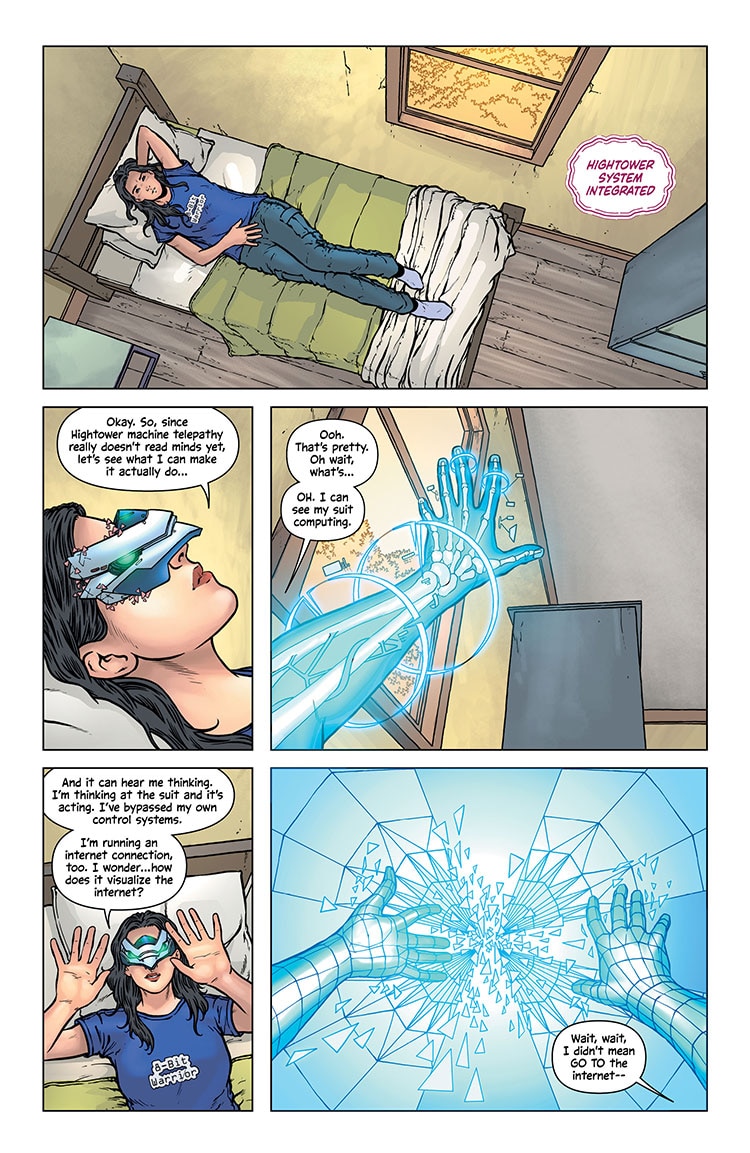

Now, just think about that for a moment. Disney’s about to release an entire movie set in a visually conveyed internet. Davis-Hunt was asked to do it in a single spread, with just one single page setting it up, and with Angela wondering aloud how her system would visualize the internet to boot. No pressure, right?
Now, Davis-Hunt uses some “tricks” of the medium here to really hammer the impact home (which are, unfortunately, completely diminished by laying out the pages in a blog post like this—sorry to any of you who haven’t read the issue yet). Angela’s last line on the preceding page is cut off, making the transition from the first page pretty abrupt and ensuring that the sheer scope of the splash catches readers off-guard. Also, the fact that it’s a splash is significant in that The Wild Storm almost never uses them, and as far as I can recall, never uses splashes that bleed off the page the way this one does. (Even that amazing first look at Skywatch’s orbiting station had a margin around it.) All of this increases the likelihood that the only thing you’ll be thinking when you see this spread is, “Oh, wow!”
As if that’s not enough, Angela is soon sensed by Jenny Sparks, who reaches out to her through the internet and has a conversation with her. While it plays out fairly straightforward on the page, Ellis’s story essentially required Davis-Hunt to draw a conversation between two people who are not in the same physical space or accessing the virtual space of the internet the same way. In lesser hands, this could have been a mess, but it’s all wonderfully clear here.
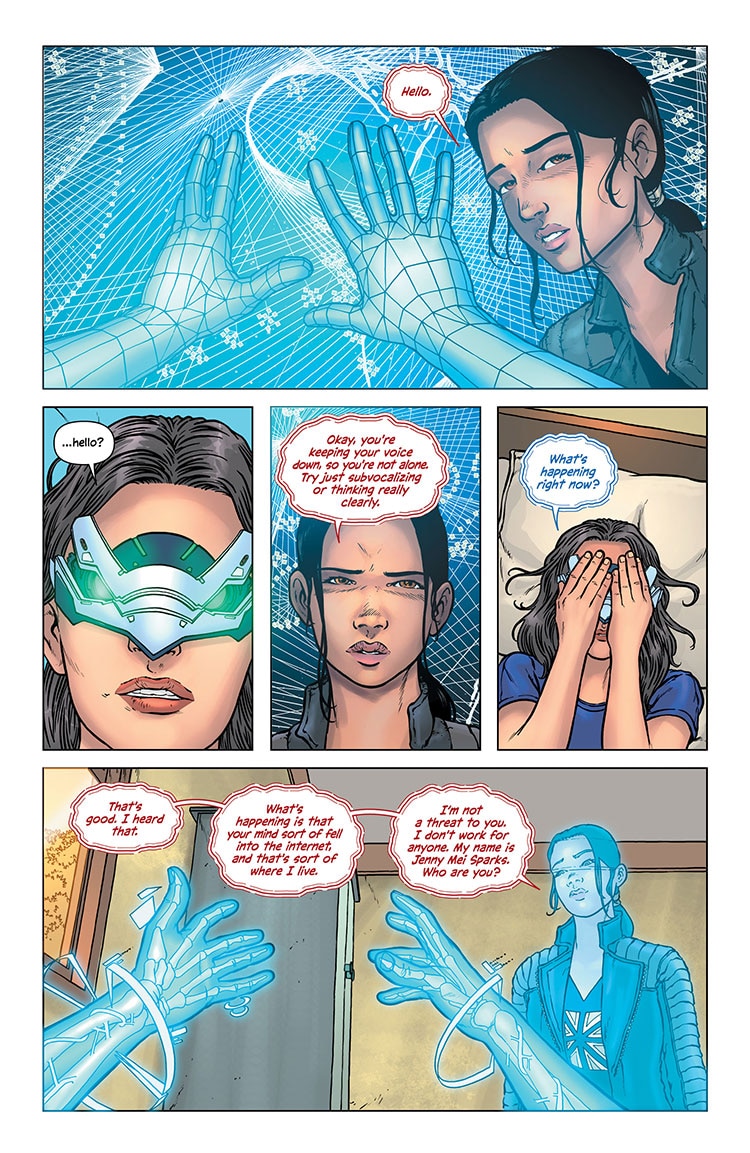
Better still, this isn’t even the only visually remarkable moment in this issue. We’re also introduced to another of John Lynch’s Thunderbook subjects, the mysterious Gloria Spaulding.
I’m going to admit something right here. I’m not 100% sure what Gloria’s power set is. A quick web search revealed that she’s the mother of Roxy Spaulding, who in the earlier WildStorm universe has the ability to control gravity. It seems like Gloria may be able to do the same, but she also seems to have an interesting relationship with light, which lends to some really cool visuals.
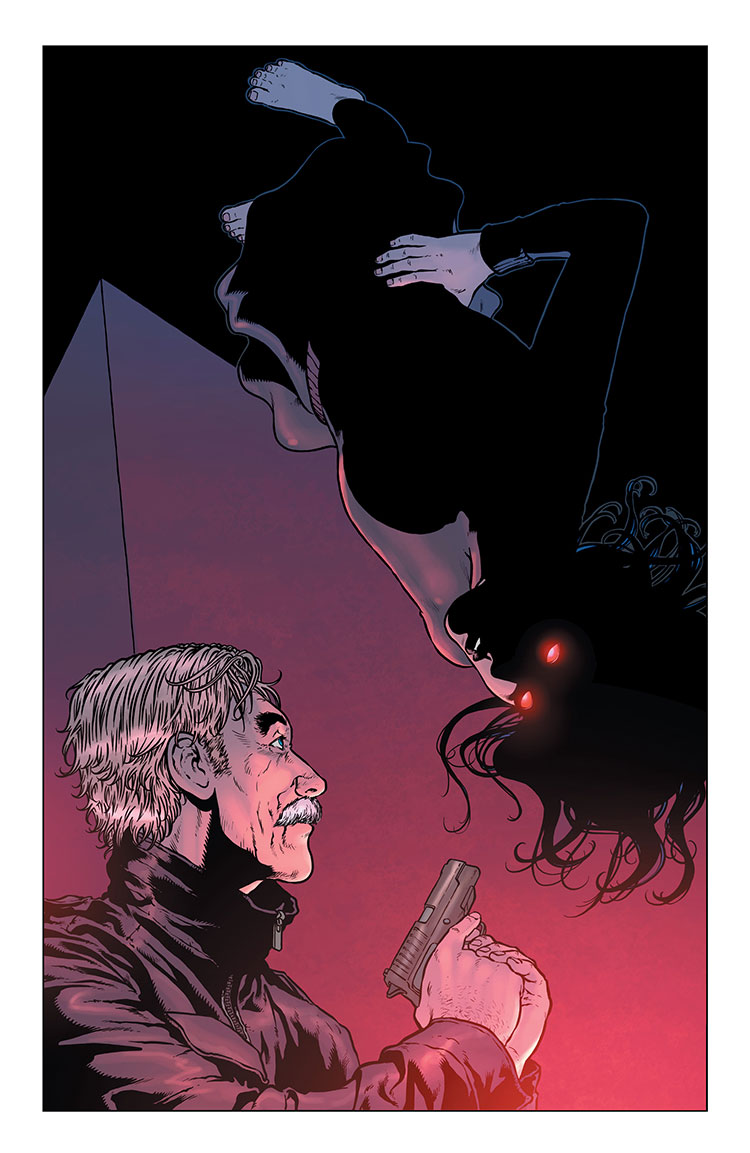
John, as he previously did with Marc Slayton and Alex Fairchild, attempts to warn Gloria that Thunderbook has been exposed and an uneasy discussion follows, largely because we’re not sure whether Gloria is friendly or even mentally stable, and how she’s going to react as a result. This is further emphasized by the fact that throughout the entire thing, she’s floating around the room above John.
While this is a pretty strange way to have a conversation, it could have been conveyed by a straightforward grid. In fact, at first it is. But as the conversation approaches its end, Davis-Hunt gives us another spread, this one making it clear exactly how unusual this conversation is.
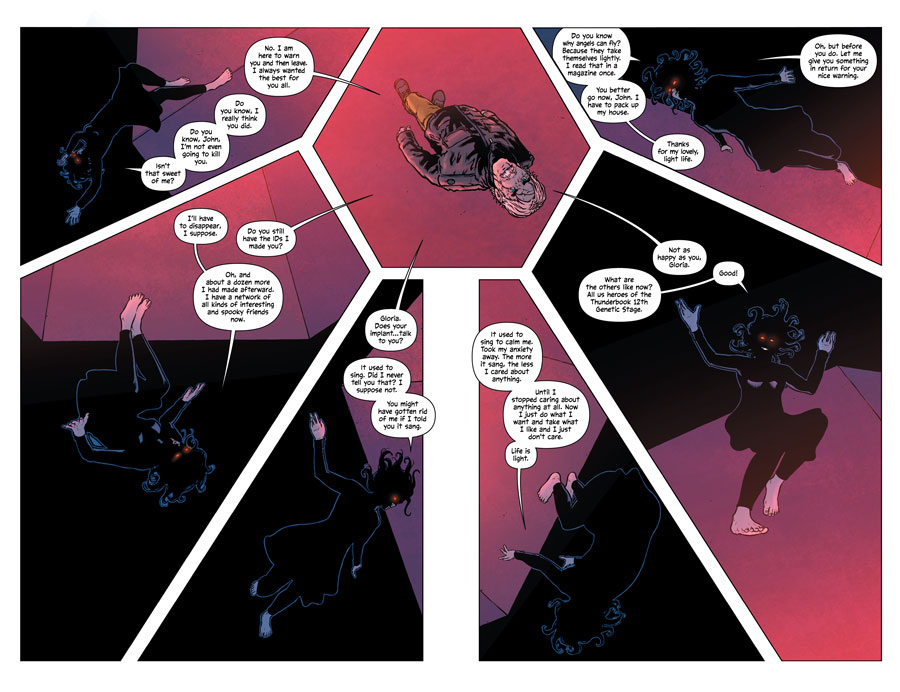
Gloria has a strange way of seeing the world that’s about as far from straightforward as you can get, which the spread’s unusual layout visually enforces for us. We’re seeing John from above, surrounded by a floating, somersaulting Gloria, who’s almost entirely shrouded in darkness here. In the very first panel, she tells John she’s not going to kill him, but Davis-Hunt’s layout suggests that she’s very much a threat. John is trapped, even if he can’t really see it, and it’s only by the whim of Gloria that he’s able to escape.
When he does, he’s flanked by a skyward bound Gloria in a two-panel page that—as if Davis-Hunt hasn’t already wowed us enough this issue—makes use of a pretty neat optical trick. While the second panel is a separate image from the first, drawn from much farther back so we’re able to see John’s truck driving away from the debris, it works in tandem with the first to emphasize the fact that Gloria’s flying upwards. She’s making her escape as John is making his. She seems to be propelled by the destruction while he’s just trying to get away from it.
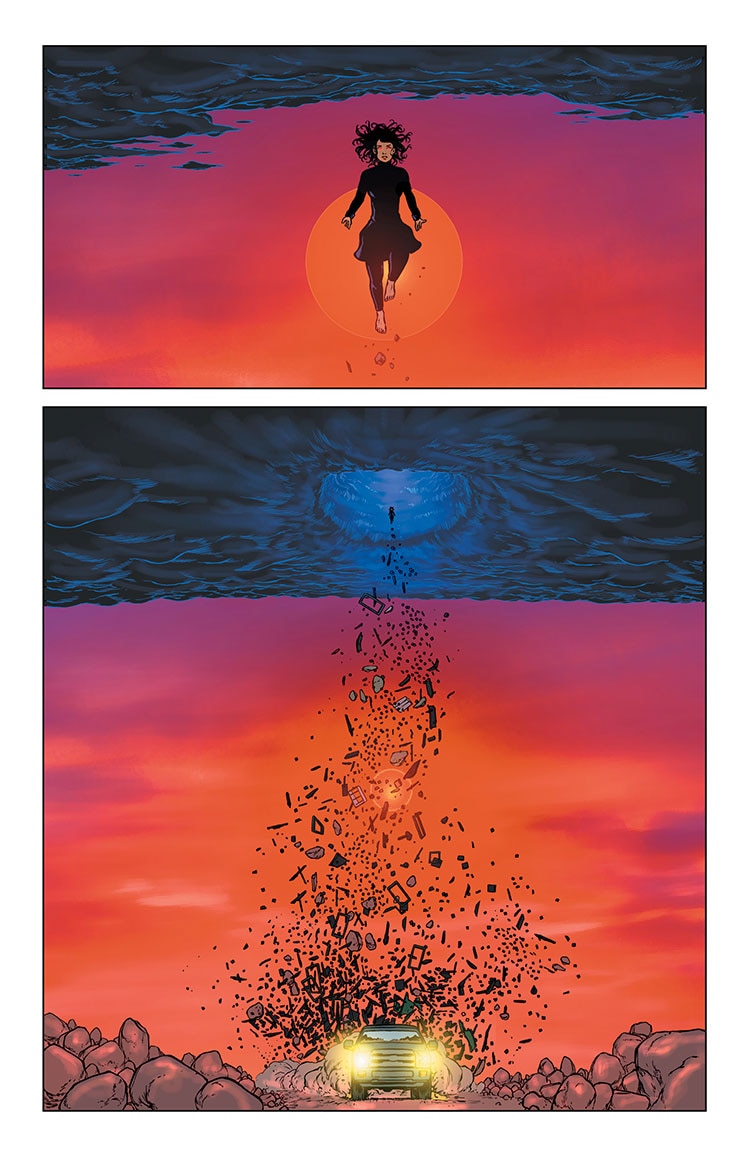
It’s a pretty brilliant composition that gets back to what I said at the start of this column. Davis-Hunt isn’t just supporting the story. At times, he’s the one telling it.
It’s interesting that for a series as talky as The Wild Storm can be at times, its action sequences are largely silent. There’s no internal monologue. No witty banter between characters. There aren’t even any sound effects. It’s not a case of action speaking louder than words. In this series, with these two talented creators, when the action speaks, the words know better than to distract.
THE WILD STORM #16 by Warren Ellis, Jon Davis-Hunt and Brian Buccellato is now available in print and as a digital download.
